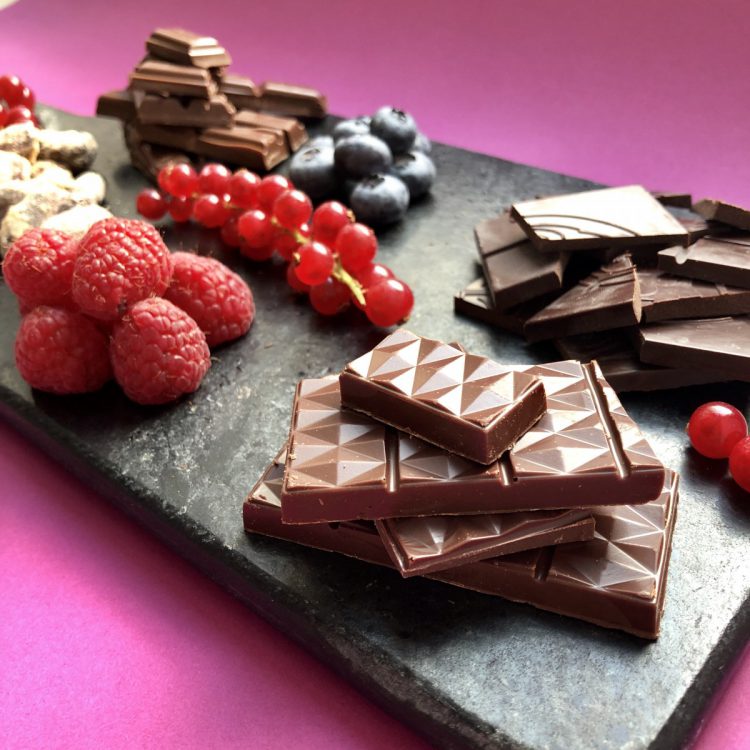There are hundreds of thousands of different plant and animal species on earth. And yet the milk in your chocolate most likely comes from the same breed of cow. And no matter where you buy bananas, you will always get the same variety. In numbers, this means that 95% of the calories that all of humanity consumes come from just 30 plant and animal species. We read the great book “Bread, Wine and Chocolate: The Slow Loss of Foods We Love” by Simran Sethi. We'll summarize for you why biodiversity is in great danger, what a worst-case scenario looks like and - most importantly! – what each and every one of us can do about it. Spoiler: Really delicious food!
The book
Simran Sethi is a journalist , podcaster ( The Slow Melt , our favorite chocolate podcast!) and author on the topics of food, sustainability and social change. In her award-winning book “Bread, Wine and Chocolate: The Slow Loss of Foods We Love,” she looks at the way we eat and explains why the earth’s biodiversity – and therefore our favorite food – is in great danger.
“This is a book about food, but it's really a book about love,” writes Simran Sethi. And that's exactly what's great about her book: In addition to lots of exciting information, it's all about enjoyment, passion and dedication to good food. And about how we can all save biodiversity.

Biodiversity in cocoa cultivation: Bean-to-bar cocoa farm in India ©Soklet
The “Global Standard Diet” and the loss of biodiversity
Long shelves in the supermarket suggest a huge selection. But if you look closer, exactly the opposite is the case. Because there is a lot to choose from, but always the same brands and ingredients. An example: 90% of the milk that goes into yogurt, ice cream or cheese comes from just one breed of cow, the Holstein-Friesian cow. Why? Because this cow produces a lot of milk. The same picture emerges for fruits, vegetables and grains. In order to meet the huge demand of consumers, we rely on a few, high-yielding and resilient varieties. Uniformity around the world – even literally. This huge need for so little food is due to the fact that we all eat the same diet. Like many other experts in this area, Simran Sethi calls this the “Global Standard Diet”: wheat, rice, corn, palm oil and soybeans make up the majority of the diet of many people around the world.
But what would happen if a disease threatened the Holstein-Friesian cow, a fungus attacked the standard wheat variety or an insect plague wiped out the corn?
If humanity continues to rely largely on just 30 species of plants and animals, says Simran Sethi, such a scenario could be devastating. The foods we know could disappear completely. But we don't even have to look into the future to realize that the "Global Standard Diet" is not good for our environment and health: carbohydrates from wheat and the like provide little energy and this diet often leads to vitamin and nutrient deficiencies to name just two health effects. In agriculture, the great need for certain foods leads to monoculture cultivation, which damages ecosystems, destroys animal habitats and is often achieved using pesticides to achieve the highest possible yield. We all eat the same thing - and that's a problem.
Everything at the beginning?
The loss of biodiversity is not easy to reverse, old varieties cannot even be restored, and broken ecosystems do not recover. Today's agriculture has been shaped over centuries by climatic changes, political decisions, globalization - and people's consumption decisions. Because the farmer grows what people buy. And that's exactly where the horizon of impact of each and every one of us and you begins: on the plate.
Because there is enough for everyone. Under one condition: We must not always eat the same 30 foods.
3 things each of us can do
So the decision starts on the plate... or better yet: in the shopping basket. Here are 3 things we can all start doing right now to conserve biodiversity:
-
Buy local. This not only benefits the local economy and is better for the climate because the food has not traveled halfway around the world, but it also gives you the opportunity to discover seasonal fruits and vegetables that only grow in your area.
- Buy directly. In the supermarket you can usually find the foods that most people want. At the weekly market or in the farm shop at the nearest farm, however, you will find varieties that you may only know from your grandma's special dish: old, local vegetables that may not look or taste like mainstream foods, but certainly taste at least as good. By the way, you can find great organic markets in and around Berlin here .
- Eat different foods. Of course, if the whole world stops eating wheat and corn and instead eats quinoa and avocado, that won't have good consequences either. Diversity and variety are the magic words. For the sake of your health, biodiversity, the climate and your taste buds. We think: There is hardly anything better than discovering unknown or forgotten foods!
 Biodiversity through permaculture: Cocoa beans from Honduras ©Chocolate Alchemy
Biodiversity through permaculture: Cocoa beans from Honduras ©Chocolate Alchemy
And what about chocolate?
Simran Sethi is a passionate chocolate fan. But their and our favorite treat is also in danger. So which chocolate should you buy to preserve biodiversity?
We can't emphasize it often enough: stay away from chocolate from big manufacturers like Nestlé! First and foremost, of course, because cocoa contains child labor and, in our opinion, Nestlé should generally be rejected. But also because small-scale cocoa is much better. It's not about the highest possible yield and the most resilient cocoa tree, but rather about growing cocoa in harmony with the ecosystem. Cocoa trees can even make a great contribution to the reforestation of rainforests and thus to healthy ecosystems. They are shade plants, meaning they grow in the shade of larger trees - by nature the opposite of monocultures.
Also great: types of cocoa that are different from the standard consumer cocoa have very different tastes and always surprise us at Theyo with their diversity!
The same applies to chocolate consumption: buy it as directly as possible. Direct trade and bean-to-bar are great ways for consumers to understand where the cocoa beans come from, under what conditions they grew and what measures farmers take to preserve biodiversity. This means that a piece of chocolate can also contribute a bit to biodiversity. 😉
https://www.youtube.com/watch?v=OqlpYDmgJD8
Plea for more enjoyment
Simran Sethi's book is shocking because it shows us how serious our planet's biodiversity is. But at the same time it is an ode to good food and conscious enjoyment. And we share this attitude.
We have the privilege of being able to decide what ends up on our plates. And we should use this freedom of choice! For the sake of our health, for the sake of the climate, for the sake of diversity… and for the sake of enjoyment. Try new things, browse markets, visit a farm, cook something completely different, drink craft beer, eat farro and snack on really good chocolate. 💛
Great reading recommendation for everyone who loves food and is interested in sustainable consumption: “Bread, Wine and Chocolate: The Slow Loss of Foods We Love” by Simran Sethi.
PS: If you are interested in the topic of biodiversity from a manufacturer's perspective, be sure to take a look at the TedTalk by Alastair from Chocolate Tree . Or organize a virtual team event with us – here you can find out everything you always wanted to know about sustainability and fair chocolate!
Are you interested in biodiversity in the chocolate sector?
This topic is particularly close to our hearts! If you would like to know more about this, please let us know → hallo[at]theyo.de
Header photo by Simran Sethi



